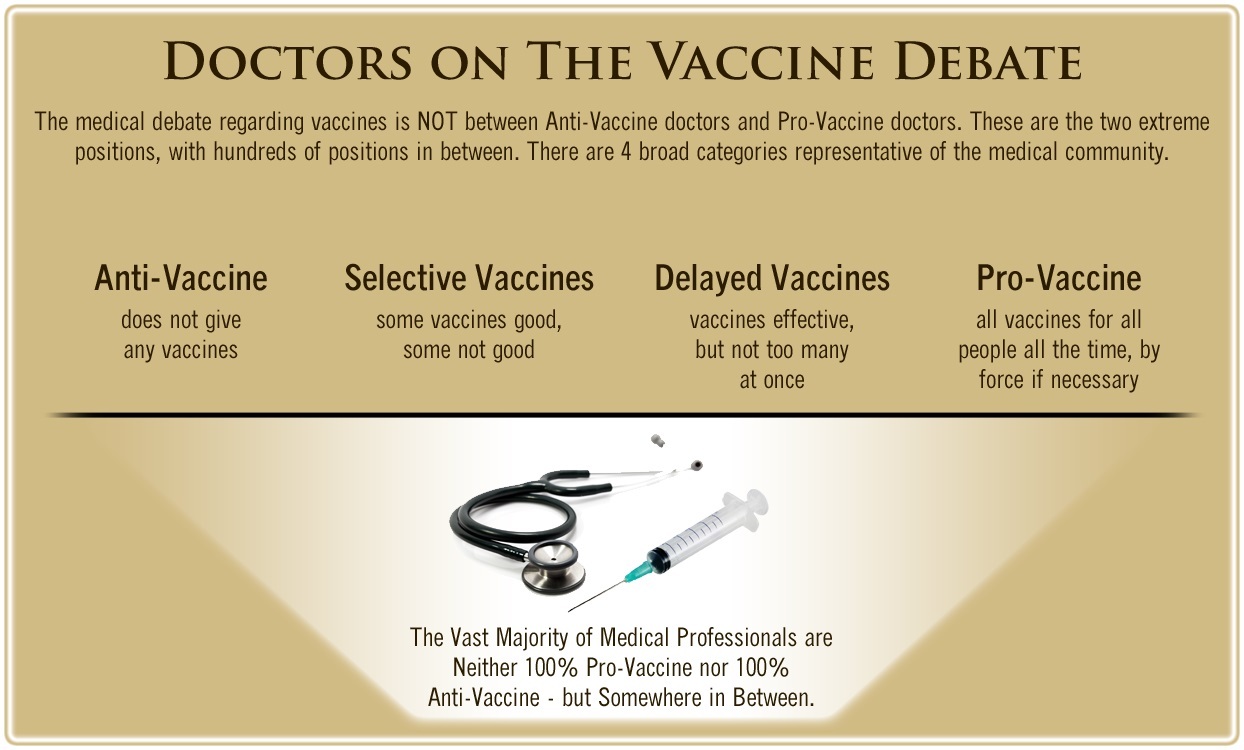
by Christina England
Health Impact News
With U.S. doctors questioning the safety and effectiveness of the new meningitis B vaccines in a shocking San Diego Union Tribune news report, we need to ask ourselves whether or not our children are more at risk from the vaccine, than they are from the disease itself.
This is a real possibility because according to the Tribune, risk of catching the disease is rare and patients from families with a history of immune system disease could be at risk from severe adverse reactions.
Dr. Mark Sawyer, an infectious disease specialist at Rady Children’s Hospital in San Diego, told reporters:
Newer vaccines on the market lack comprehensive evidence on safety and effectiveness, compared with vaccines that have been administered to tens of millions of people over decades.
Furthermore, he continued by informing reporters that he did not vaccinate his own daughter because he did not feel that she was at an increased risk and stated:
Parents should realize that there are many more pressing threats on the vaccination front.
Campaigners Call for Every Child to be Vaccinated
In a recent article, the Daily Mail announced that last September, Britain became the first country in the world to launch a vaccination program for meningitis B, a disease which officials say kills around 120 people each year and leaves another 400 with lifelong disabilities.
The free vaccine that is being offered to parents in Britain as part of children’s routine vaccination schedule is currently only available for children under the age of one. However, campaigners want the vaccine to become available to all children and they have petitioned the government.
Daily Mail stated:
Meningitis B is an inflammation of the lining of the brain and spinal cord, which can lead to multiple organ failure and death.
It affects about 1,870 people in the country each year, half of them under-fives, striking so quickly it is often too late to treat by the time it is spotted.
Babies and young children are especially susceptible because their immune systems are not fully formed.
The petition, one of the biggest seen on the Parliament website, calls for all children up to the age of 11 to be vaccinated.
However, parents are not being told the full facts about these vaccinations.
Two Vaccines Approved for Use
Currently there are two meningitis B vaccines on the market: BEXSERO, manufactured by GlaxoSmithKline/Novartis, and TRUMENBA, manufactured by Pfizer.
According to Meningitis Now, Bexsero was first licensed in Europe in 2013, and although it has not been used routinely anywhere else in the world until recently, 500,000 doses of the vaccine have been given in over 35 countries worldwide.
The second vaccine, Trumenba®, was approved in the United States for use in 10 to 25 year-olds by the Food and Drug Administration (FDA) in November 2014 and has been used in the U.S. ever since.
On the 30th of June 2015, the Confederation of Meningitis Organisations stated:
In February of this year the CDC voted to recommend the vaccines for adolescents aged 10 years and over but only for high-risk individuals. The latest recommendation is not restricted to those considered at high risk and specifies that the preferred age of vaccination is 16-18 years, though vaccines can be administered up to 23 years of age. The age range specified targets the group who have the highest incidence of the disease.
As of yet, the vaccine has not been offered as part of the funded schedule; therefore, it is up to the individual parent whether or not they have their child vaccinated.
In January 2015, the FDA also approved Bexsero for use in the U.S.:
The U.S. Food and Drug Administration today approved Bexsero, a vaccine to prevent invasive meningococcal disease caused by Neisseria meningitidis serogroup B in individuals 10 through 25 years of age.
Bexsero is the second vaccine approved by the FDA in the past three months to prevent this disease. The agency approved the first meningococcal serogroup B vaccine in October 2014.
On the subject of adverse reactions, the FDA stated that:
The safety of Bexsero was assessed in approximately 5,000 participants who received the vaccine in studies conducted in the U.S. and abroad. The most commonly reported side effects by those who received Bexsero were pain and swelling at the injection site, headache, diarrhea, muscle pain, joint pain, fatigue, and chills. In addition, safety was monitored in more than 15,000 individuals who received Bexsero prior to approval in response to two university outbreaks of serogroup B meningococcal disease in the U.S.
Whilst these adverse reactions are mild, more serious adverse reactions have been listed in the vaccine insert.
Facts Hidden from Plain Sight: Infant Vaccine Only Approved for Older Children

In the UK, Bexsero is the main vaccination being recommended for babies between the ages of two and six months, a vaccine that, according to the manufacturers vaccine insert, has only been approved for individuals from the ages of 10 through to 25.
What is even more alarming is the fact that the manufacturer has stated that the safety and effectiveness of this vaccine have not been established in children under 10 years of age.
If this is correct, then parents need ask themselves why the UK government has decided to vaccinate babies as young as two months of age, with a vaccine that is potentially unsafe and ineffective.
Another Alarming Fact: High Amounts of Aluminum
Another worrying fact is that the Bexsero vaccination contains 1.5 mg of aluminium, which is a massive 1475 mcg more than the FDA’s “safe” recommended amount.
Dr. Sears is a medical professional who has been exceptionally worried about the effects of aluminum on children’s health. In an article warning mothers about the dangers of vaccinations containing the adjuvant, titled Is Aluminum The New Thimerosal?, he explained that aluminum has been added to vaccinations to help them work more efficiently. He stated that, although this would not normally be a problem because aluminum is a naturally occurring element found everywhere in our environment, including our food, water, air and soil, he had become worried about the effects that aluminum was having on children’s health. He also wondered if anyone had ever actually tested the safe level of injected aluminium.
To find out more, he began to research the subject more closely.
During his research, he came across a number of extremely worrying documents. However, few were as worrying as the one written by the American Society for Parenteral and Enteral Nutrition (ASPEN).
Describing the document in depth, Sears wrote:
The source of the daily limit of 4 to 5 mcg of aluminum per kilogram of body weight quoted by the ASPEN statement seems to be a study that compared the neurologic development of about 100 premature babies who were fed a standard IV solution that contained aluminum, with the development of 100 premature babies who were fed the same solution with almost all aluminum filtered out. The study was prompted by a number of established facts: that injected aluminum can build up to toxic levels in the bloodstream, bones, and brain; that preemies have decreased kidney function and thus a higher risk of toxicity; that an autopsy performed on one preemie whose sudden death was otherwise unexplained revealed high aluminum concentrations in the brain; and that aluminum toxicity can cause progressive dementia.
He continued by giving some extremely alarming facts, many of which few parents are aware of:
However, none of these documents or studies mentions vaccines; they look only at IV solutions and injectable medications. Nor does the FDA require labels on vaccines warning about the dangers of aluminum toxicity, although such labels are required for all other injectable medications. All of these studies and label warnings seem to apply mainly to premature babies and kidney patients. What about larger, full-term babies with healthy kidneys?
He explained:
However, these documents don’t tell us what the maximum safe dose would be for a healthy baby or child, and I can’t find such information anywhere. This is probably why the ASPEN group suggests, and the FDA requires, that all injectable solutions be limited to 25 mcg; we at least know that that level is safe.
If this is true, then the amounts of aluminium added to the Bexsero vaccination far exceed the recommend safety levels.
Bexsero May be Ineffective – Contains E. coli
Furthermore, the vaccine insert for Bexsero stated that:
BEXSERO may not protect all vaccine recipients. BEXSERO may not provide protection against all meningococcal serogroup B strains.
In other words, desperate and vulnerable parents are pinning their hopes on a vaccine that may or may not work, is overloaded with aluminum and may give their child adverse reactions.
Another interesting fact is that according to the CDC one of the ingredients that this vaccine contains is E.coli and this was not listed by the manufacturer.
We need to ask ourselves why such a dangerous ingredient as E.coli would be added to a childhood vaccine and why it was not mentioned by the manufacturer. This is especially suspicious when you consider that, according to the FDA, diarrhea is one of the side effects of this vaccine.
Moving on the Second Meningitis B Vaccine
The second meningitis B vaccine that is currently on the market is Trumenba®. Like Bexsero, Trumenba® has only been approved by the manufacturer for use in individuals aged 10 to 25.
On the vaccine insert, the manufacturer, Pfizer, stated that in trials, the most common adverse reactions were the following:
- Pain at the injection site
- Fatigue
- Headache
- Muscle pain
- Chills
However, although these adverse reactions are fairly mild, the frequency of their occurrence was extremely high.
Despite this information, however, Trumenba was the first meningitis B vaccine to be approved by the FDA. Even more worrying, in a clinical study, over 90 percent of children under the age of 12 months who were vaccinated with this vaccine at a reduced dosage suffered a post-vaccination fever.
So far, this vaccine has only been used on individuals aged 10 – 25 in the U.S. However, this recommendation may change in the future and parents need to be vigilant.
Although this vaccine “only” contains 0.25 mg of aluminium, this amount is still above the FDA’s recommended safety level and, once again according to the CDC, this vaccine contains E.coli as its surprise ingredient.
The Dangers of Aluminum Unleashed
Aluminum has been named as the second most used metal in the world after steel, largely because it is so versatile. It can be found in our food, drinking water, atmosphere, medication, vaccinations and cosmetics.
According to U.S. Department of Energy, Energy and Efficiency and Renewable Energy, the United States’ aluminum industry is the world’s largest, processing 9.6 million metric tons of metal and producing about $40 billion in products and exports in 2003.
However, despite its versatility and its many uses, aluminum has become one of most negatively talked about products used today. In recent months, scientists have linked its use to cancer, autism and Alzheimer’s disease. So, what is being done to protect the public from its many dangers?
Aluminum is Toxic and Potentially Harmful to Humans
Professor Christopher Exley, often referred to as Mr. Aluminum, has been studying the effects of aluminum on the human body for thirty years and has become increasingly worried. In a recent video presentation, he explained that, despite the fact that aluminum has been regularly used as an adjuvant in vaccination for many years, little is known about its effect on the human body. He made it clear that we should accept that aluminum is toxic and that toxicity may take many different forms. He stated that wherever it ends up in the body, it has the potential to do harm.
This is certainly something to consider, especially when none of us can be certain where an aluminum adjuvant will accumulate once it has been vaccinated into our body.
Professor Exley continued by stating that:
If aluminum is in the brain, it can produce neurodegeneration and problems associated with the brain; if it is in the bone, it can produce bone disease. Wherever it ends up in the body, it has the potential to cause toxicity, whether it is in humans, fish or any other living organism.
Taking this a little bit further, Professor Exley explained that it is possible for two individuals to have very similar amounts of aluminum in their body and for only one of them to suffer an adverse effect, which he says could be due to individual physiology, medical history and genetics.
Speaking about the different ways in which the body can absorb aluminum, Professor Exley talked about the gut, the lungs, the nose and the skin before moving on to the subject of vaccination and adjuvants. He stated that we must understand that aluminum exposure in this form is very different from any other form of exposure.
Discussing his work, he said:
Currently, we are researching the simple things. For example, when you inject an adjuvant, what is its fate? What happens to it? What happens to it, relative to the antigen that it was injected with?
We are about to be able to publish what we believe is for the first time unequivocal evidence that, yes, immune cells do come to the site of the injection, they do take up aluminum particles and they will transport them elsewhere.
Professor Exley continued:
In other words, once you have been vaccinated with a vaccine containing an aluminum adjuvant at an injection site, there is the potential for it to go anywhere in the body and if it is such an effective adjuvant at an injection site, then could it not be an equally effective adjuvant elsewhere? In other words, if particulate aluminum gets carried into the brain or into another organ, then it could have the potential to act as an adjuvant there, couldn’t it? Could it not induce the type of inflammatory response that you see at the site of an injection in any other type of tissue where that adjuvant material ends up, simply because it’s been carried there?
Professor Exley’s research and a wide range of articles, studies and peer-reviewed papers linking vaccinations containing aluminium to neurological conditions can be found on the Children’s Medical Safety Research Institute website.
To learn more about this topic, see also Dr. Humphries’ presentation:
Aluminum is Toxic to All Life Forms: So Why is it Used in Vaccines?
Conclusion
These vaccinations are potentially ineffective, unsafe and carry a large risk of adverse reaction. Health Impact News believes that parents should be informed and know all the risks involved before making a decision as whether or not they should vaccinate their children with the new meningitis B vaccines.
Medical Doctors Opposed to Forced Vaccinations – Should Their Views be Silenced?
One of the biggest myths being propagated in the compliant mainstream media today is that doctors are either pro-vaccine or anti-vaccine, and that the anti-vaccine doctors are all “quacks.”
However, nothing could be further from the truth in the vaccine debate. Doctors are not unified at all on their positions regarding “the science” of vaccines, nor are they unified in the position of removing informed consent to a medical procedure like vaccines.
The two most extreme positions are those doctors who are 100% against vaccines and do not administer them at all, and those doctors that believe that ALL vaccines are safe and effective for ALL people, ALL the time, by force if necessary.
Very few doctors fall into either of these two extremist positions, and yet it is the extreme pro-vaccine position that is presented by the U.S. Government and mainstream media as being the dominant position of the medical field.
In between these two extreme views, however, is where the vast majority of doctors practicing today would probably categorize their position. Many doctors who consider themselves “pro-vaccine,” for example, do not believe that every single vaccine is appropriate for every single individual.
Many doctors recommend a “delayed” vaccine schedule for some patients, and not always the recommended one-size-fits-all CDC childhood schedule. Other doctors choose to recommend vaccines based on the actual science and merit of each vaccine, recommending some, while determining that others are not worth the risk for children, such as the suspect seasonal flu shot.
These doctors who do not hold extreme positions would be opposed to government-mandated vaccinations and the removal of all parental exemptions.
In this article, I am going to summarize the many doctors today who do not take the most extremist pro-vaccine position, which is probably not held by very many doctors at all, in spite of what the pharmaceutical industry, the federal government, and the mainstream media would like the public to believe.












One Comment